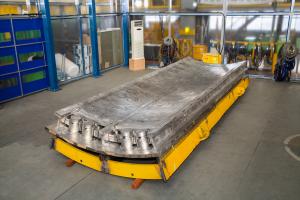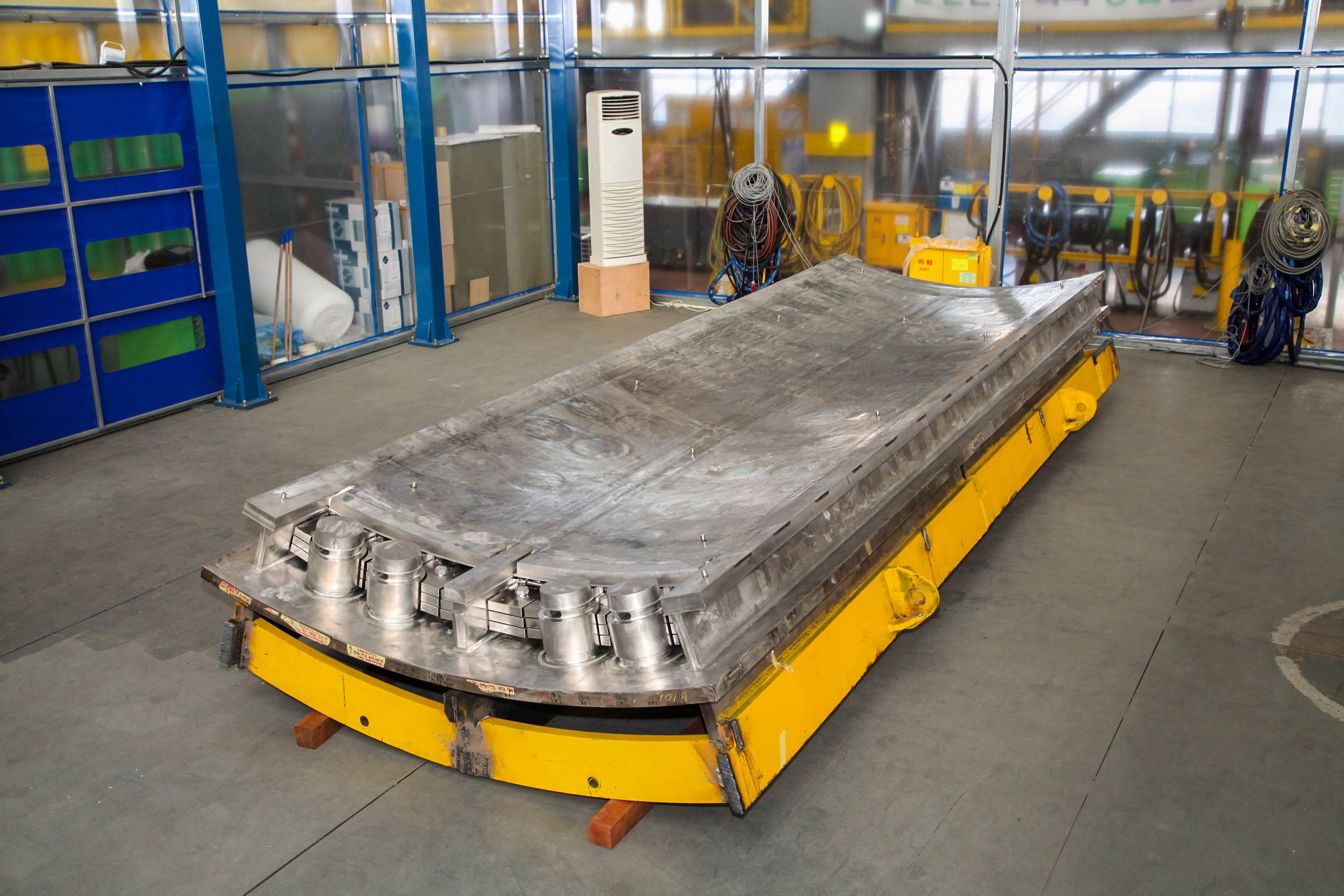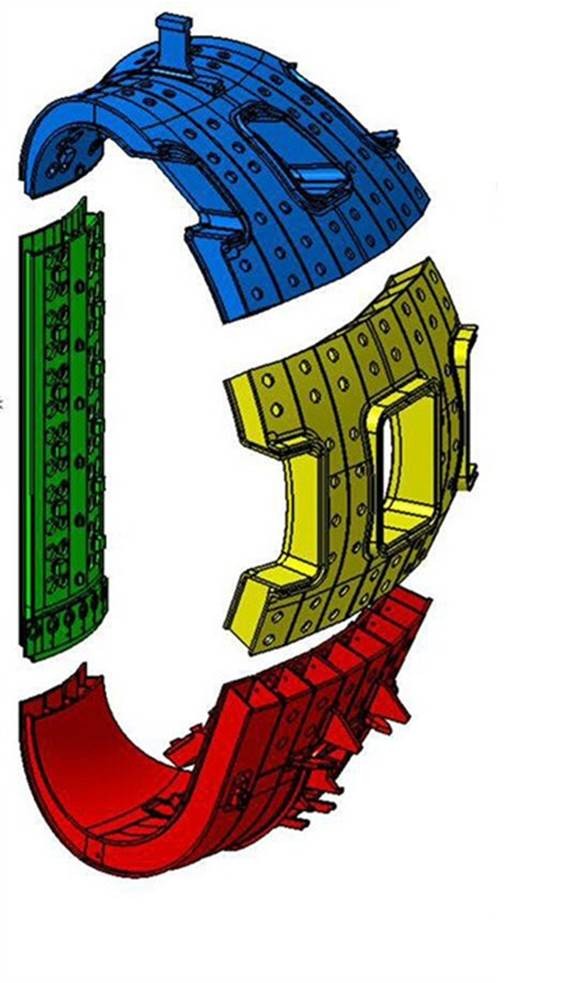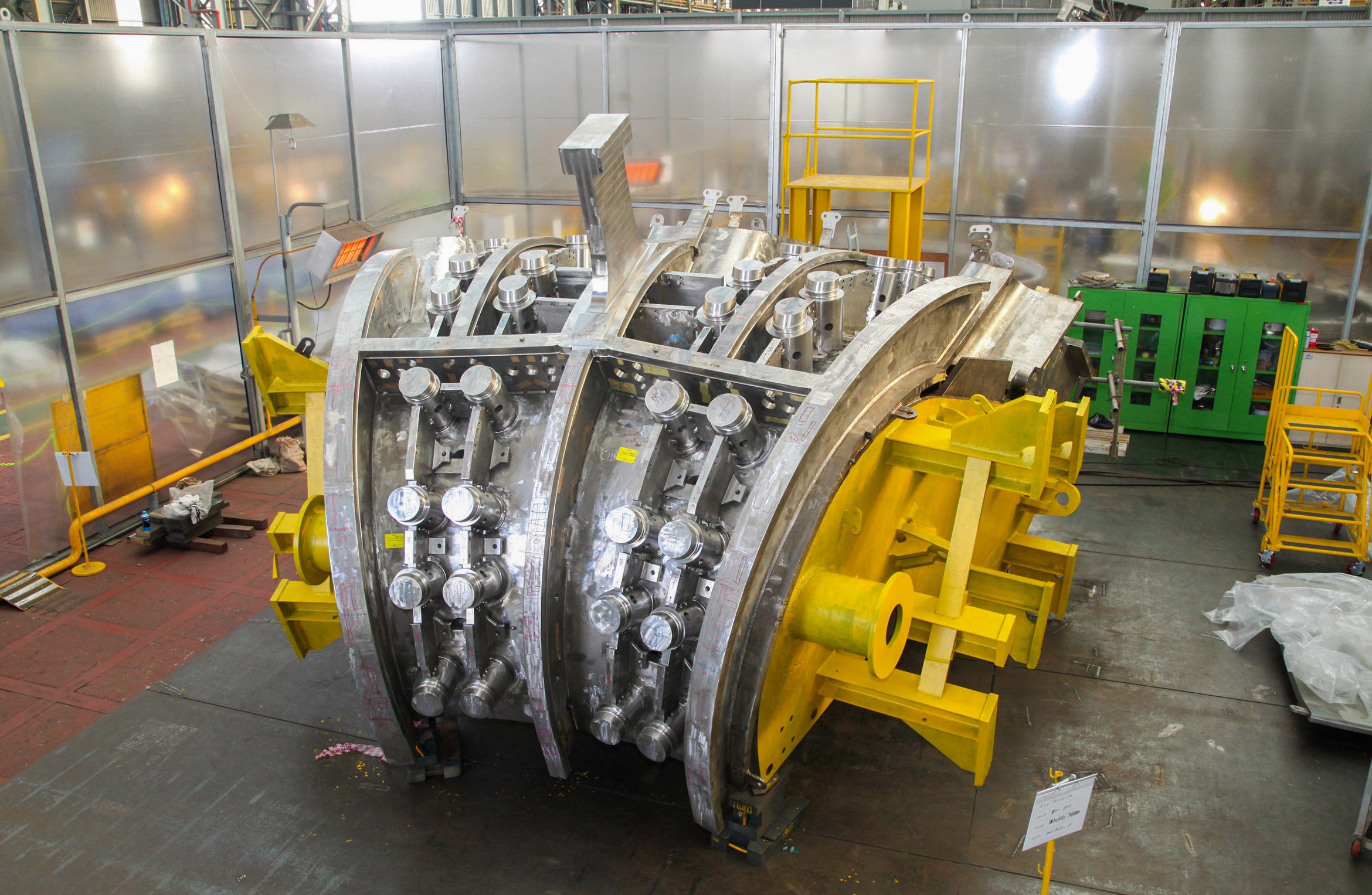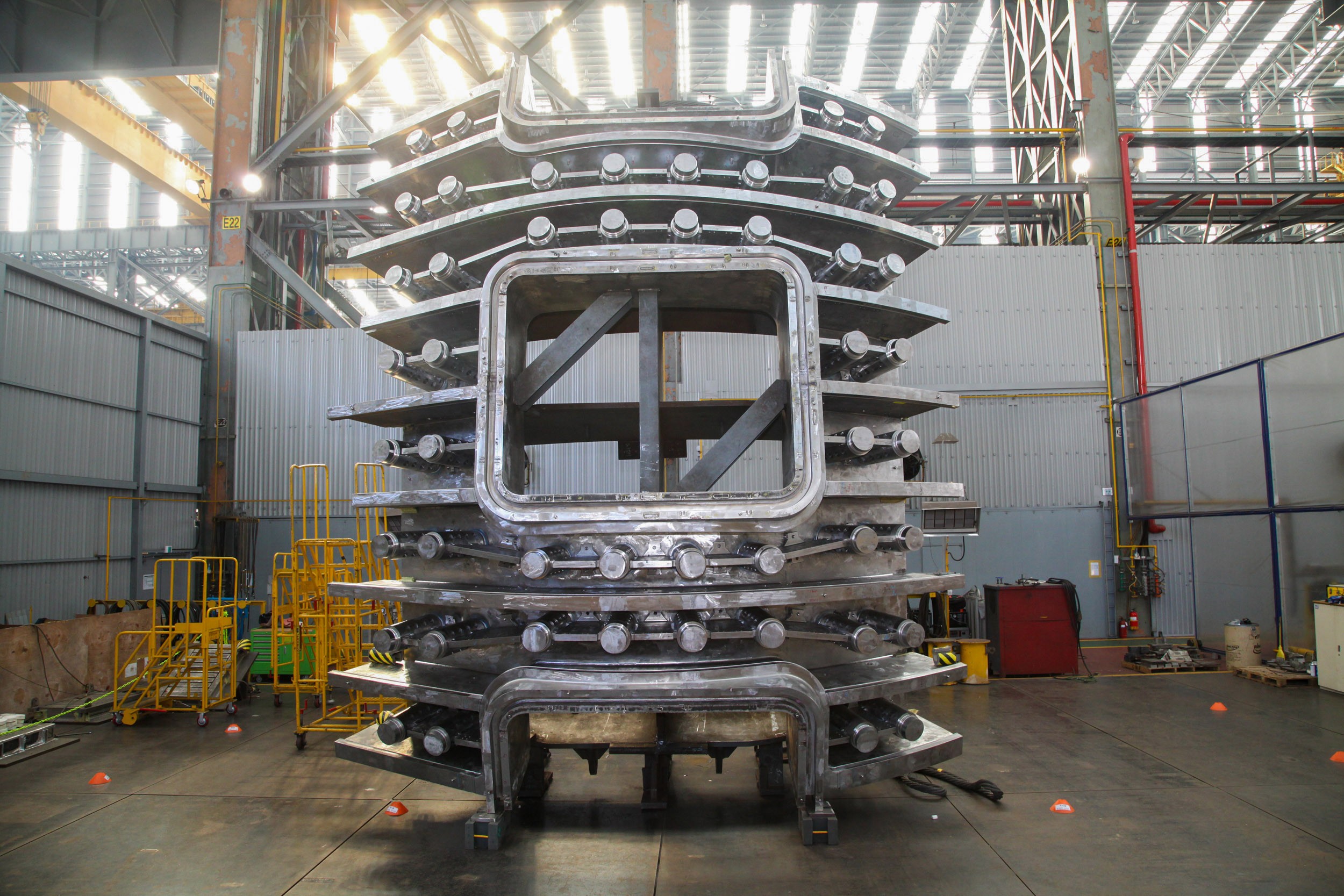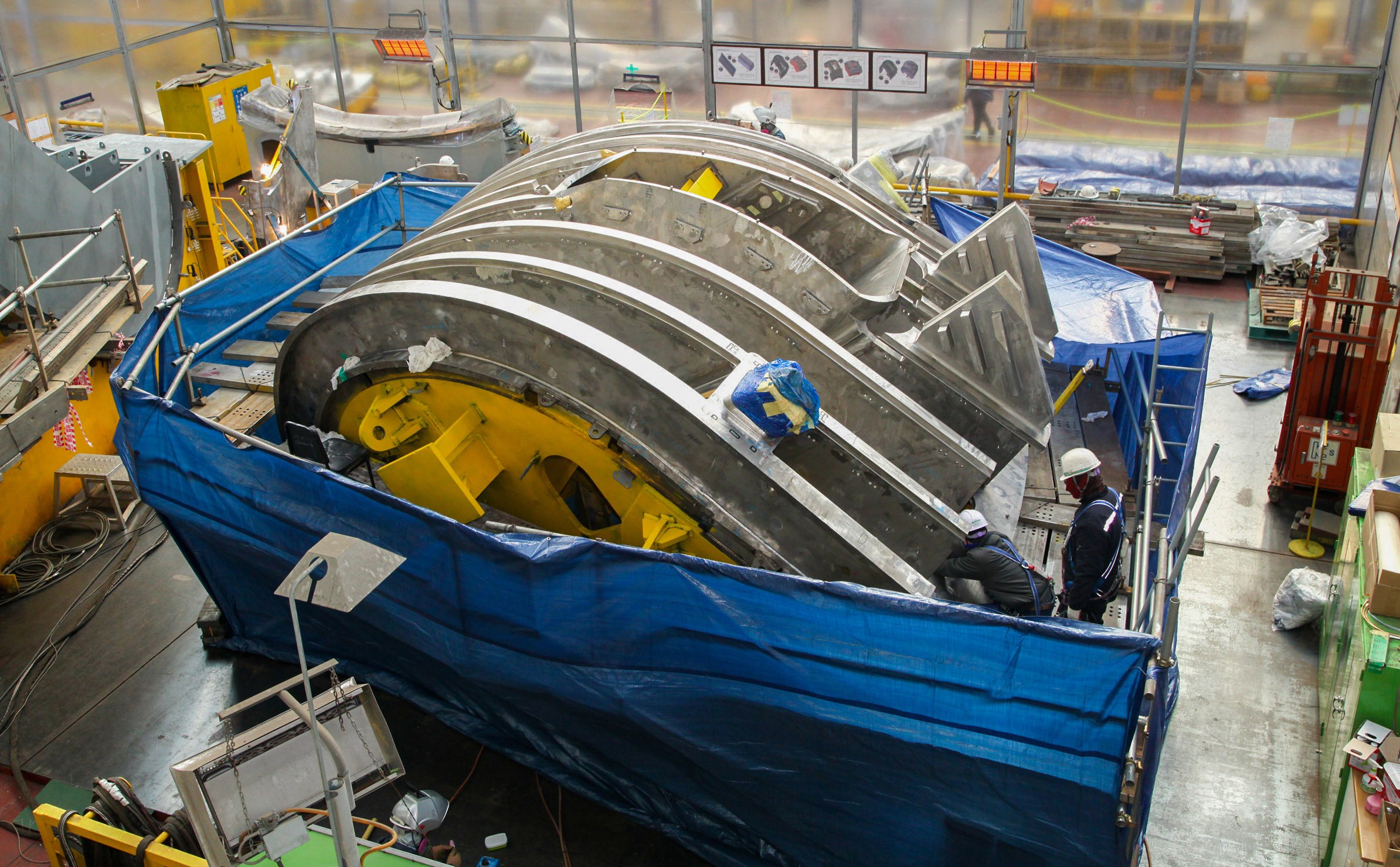On 11 December 2017, Hyundai Heavy Industries (HHI) completed dimensional checks on the inboard (poloidal) segment of vacuum vessel sector #6—the first-completed segment of the vacuum vessel construction program.
All inspection and test results demonstrated that safety requirements are fully satisfied and that the tolerances of the completed segment, measured at ± 4.0 millimetres, are well within the ITER requirement of ± 10.0 millimetres.
With this successful realization the ITER Project celebrates both an industrial and a programmatic milestone, as the first production unit is the result of a lengthy program to establish, qualify and implement manufacturing and test procedures for a one-of-a-kind component, and also respects the calendar of ITER Council milestones that has been established to track project progress.
"It was very challenging to reach this level of technical maturity and achievement," says Wooho Chung, the technical responsible officer for the vacuum vessel at ITER Korea. "Because the vacuum vessel will act as the first safety confinement barrier, all of our procedures and activities had to be qualified and approved by the Agreed Notified Body (a company authorized by the French Nuclear Regulator to assess conformity of components in the pressure equipment category, ESPN)."
Since signing a Procurement Arrangement with the ITER Organization in November 2008, teams in Korea have developed—and received authorization for—detailed manufacturing procedures for forming, welding, and non-destructive examination (especially ultra-sonic examination and remote visual examination).
"After successfully completing the manufacture of the first poloidal segment, we will now be able to move more smoothly on the basis of confirmed manufacturing processes and procedures," states Chung. "We know that we have still remaining challenges—such as the completion of the outboard segments for sector #6 as well as factory acceptance tests—but we are confident that we can achieve these steps this year."
The ITER doughnut-shaped
vacuum vessel will be welded in the Tokamak Pit at ITER from nine steel sectors. Each 40° vacuum vessel sector is a double walled steel component weighing 500 tonnes and measuring 12 metre in height and 7 metres in width, with multiple port openings and in-wall shielding contained within its walls in the form of modular blocks.
Key to the good progress on the challenging procurement of the vacuum vessel, according to Chung, is very constructive and cooperative collaboration between the members of the Vacuum Vessel Project Team and industries.
Fabrication responsibility is shared by four ITER Domestic Agencies—Europe (five main vessel sectors); Korea (four main vessel sectors plus equatorial and lower ports); Russia (upper ports); and India (in-wall shielding)—plus the ITER Organization and a large number of industrial contractors. The Vacuum Vessel Project Team was created to make one team of these participants for promoting synergies, the sharing of experience, and the rapid resolution of fabrication issues.
Collaboration meetings among participants of the Vacuum Vessel Project Team are organized regularly; (
please see the report of the latest meeting on the European Domestic Agency website). All vacuum vessel components are currently being manufactured with good quality assurance and quality control at various industrial locations worldwide.
With the results achieved for the first segment, Hyundai Heavy Industries has identified how tolerance control can be improved for the next segments through experience. The results are also undergoing detailed, integrated analysis at the ITER Organization Design & Construction Integration Division, taking into account all interfacing systems.
The Korean Domestic Agency plans to complete the first sector (#6) and start the mass production of all remaining sectors/ports in 2018.

